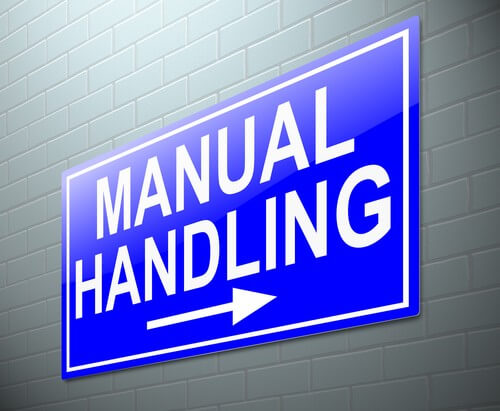
Prevent manual handling injuries in your workplace
Every year, more than 100,000 reports of manual handling injuries are reported in Australia. It’s one of the most common causes of injury and it’s one that affects every business. It’s up to employers to minimise the risk of all injuries, provided it is reasonably practicable.
It doesn’t matter whether you’re a small business owner or the owner of a major corporation. The most effective way to reduce any type of injury in a business is by fully reviewing the tasks that employees need to carry out and creating a best practice for them to follow. This will limit the risk of injury and potential disruptions in the business. It’s all about avoiding workplace injuries of any kind, including manual handling.
What Is Manual Handling?
Before you can start avoiding manual handling injuries, you need to understand what it is you are talking about. Manual handling is any activity that requires the exertion of force, whether it is to pull, push, lower, carry, hold, move or restrain. Common manual handling injuries include neck pain, arm and shoulder pain that includes fingers, hands, wrists, elbows, and forearms, as well as lower back pain. These injuries typically result from lifting heavy objects or dealing with unbalanced loads. Though, many of them occur after continual handling.
Minimising The Risk
There are a number of issues at play when addressing manual handling. The weight of the load is important, but so is posture, equipment to assist with manual tasks, the environment, the physical fitness of the employee, and how often the task is completed.
Employers have to limit the risk as much as possible. It might be that manual handling is limited in the workplace or that aids are introduced to reduce the risk. Of course, training is also imperative to the process and is necessary for compliance with the work health and safety legislation.
You can use a four step process to prevent manual handling injuries in the workplace.
1. Identify the Risk
The first step is to identify any risks that may come with the tasks that your employees carry out. You can start by looking at the injury records for your workplace. If there is a pattern, it won’t take you long to recognise it. You should also speak to your employees about the risks. Not only is this a legislative requirement, but they are the people who tackle the tasks and will likely have a better idea of the risks than their managers.
Finally, you can walk the workplace and look at the risks that your employees face.
2. Assess & Control the Risks
Once you have identified the risks in the workplace, you can assess them. Consider the layout of the workstations as well as the overall workplace. Is there are a way to reduce the risk of reaching, twisting, and bending? Ideally, the workstation will be organized so that manual handling can be completed at waist height, if not eliminated altogether.
You will need to consider how often and how long manual handling tasks typically are. Another factor to take into consideration is how far a load must be moved and where it is stored. Injuries are more likely when the weight is above the shoulder or below the thigh. Of course, the greater the weight, the greater the risk. Another issue is how much force is required to handle a load.
Once the risks have been assessed, control measures should be put in place to control the risks.
3. Check and Maintain Equipment
If you already have equipment on site, then you should ensure it is working properly. Faulty equipment can cause injuries as well. Another common cause of manual handling injuries is a lack of organisation in the workplace. That might be chasing an unrealistic deadline, but it could also be a lack of staff which increases the pressure to deliver more.
3. Monitor and Review
From there, you should evaluate the workplace, operating procedures and risk assessments regularly to ensure your changes are effective in minimising risks in the workplace.
The Money Edge | Bundaberg

.png)
.png)
.png)